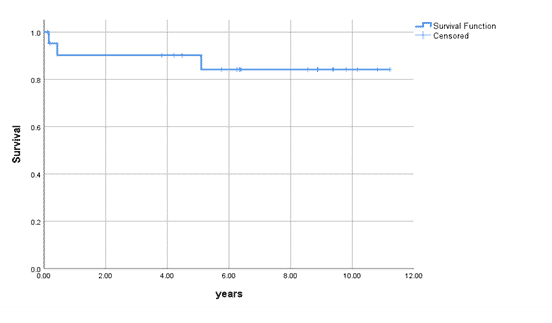
Double radial artery grafting after immediate phase radial catheterization: a decade of clinical experience
2Clinical Research Center, Soroka University Medical Center, Israel
Introduction:
The use of catheterized radial artery (RA) in Coronary Artery Bypass Grafting (CABG) surgery is a matter of debate. Studies have shown hyperplasia phenomenon post catheterized RA (CA-RA), mainly in the first 1-3 months. Although expanding use of RA grafting, clinical long-term outcomes of CA- RA grafting are still mystified. This study shows long- term clinical outcomes with immediate phase CA- RA grafting.
Material and method:
We examined all CABG surgeries in our ward, undergo bilateral radial artery grafting, between the years 2010-2021 in “Soroka Medical Center”, Israel. We found twenty-five patients and reviewed their medical records. Three patients were excluded due to a femoral catheterization. All data was collected from objective systems and findings are presented in this study with a follow-up of 11 years as the upper limit.
Results and discussion:
Mean time from radial artery catheterization and its implantation as a bypass graft was 11.59 days (median - 9.5 days). No operative mortality noted. Cardiac mortality occurred in three patients, 13.63% (KM CURVE, Fig.1). Early mortality was 9.09% and late - 40.9%. Mean age -71y; male gender predominance (59.1 %). Hence, this study may reflect good potency of acute phase CA- RA graft, although in elderly patients over long- term follow up. This study’s cohort is unique by the lack of ability to use SVG as common, based on clinical evaluation, hence its low power. Further evaluation will be matching a control group with propensity score analysis.
Fig.1 – Cardiovascular death among 22 patients undergoing CABG surgery with CA-RA:
Conclusion:
CABG with catheterized radial artery is applicable and must be considered under several circumstances. Notably, an expanding data accumulates on the benefit of RA grafting and the patency of immediate phase CA-RA grafting. Using a comprehensive perioperative estimation and preparation of the CA-RA is fundamental and should be tailored to the patient.
Powered by Eventact EMS